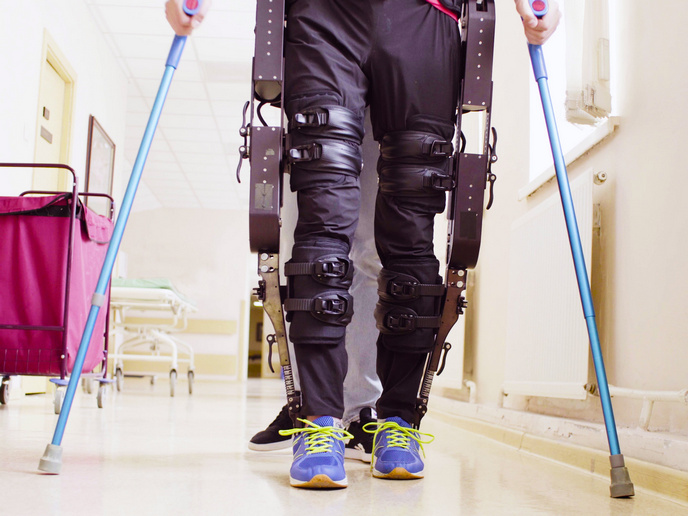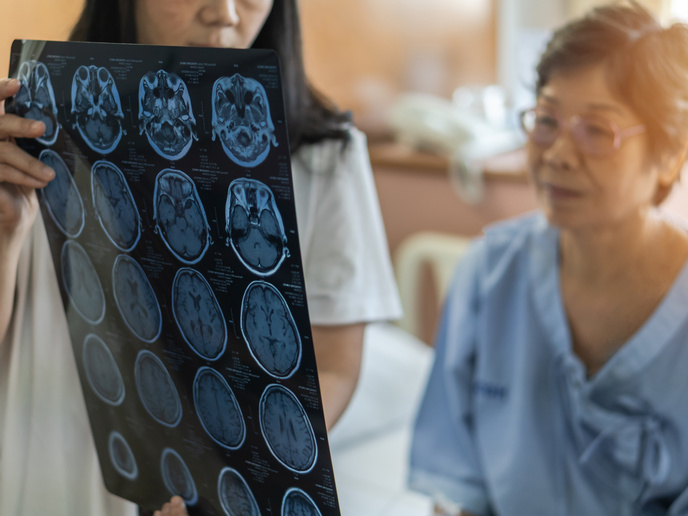Intelligent robotic rehabilitation after stroke
Stroke constitutes a leading cause of long-term disability, with most patients exhibiting some walking impairment. Robotic-assisted gait training(opens in new window) (RAGT) constitutes a promising rehabilitation approach used to help individuals recover their walking abilities. RAGT involves the use of specialised robotic devices that enable people to walk with electromechanical assistance. It offers more controlled and intensive training experience compared to traditional physical therapy helping patients regain their gait patterns, improve balance, and develop muscle strength.
User-driven RAGT rehabilitation
To date, RAGT has relied on pre-programmed stepping parameters, disregarding the user's intended stepping trajectory. Consequently, users often become passive passengers within the device, hindering their potential for neuroplastic changes and recovery. When users fail to actively contribute to the stepping process, they limit their capacity for motor learning and rehabilitation. Moreover, if the device delivers a step that conflicts with the user's intended trajectory, it provides negative feedback, further impeding motor learning and recovery. Undertaken with the support of the Marie Skłodowska-Curie Actions(opens in new window) (MSCA) programme, the PRO GAIT(opens in new window) project aimed to address these current limitations in RAGT by developing an intelligent device that plans each step with the user’s involvement. “Our goal was to create a responsive approach that can interpret and deliver the trajectory of the user’s intended step, unlocking the full potential of RAGT for gait restoration,” explains project coordinator Olive Lennon.
The effect of RAGT on brain activity
Restoration of gait after a stroke requires brain neuroplasticity alongside opportunity for repetitive practice. While robotic gait devices allow repeated practice, their neuroplastic potential associated with recovery remains unknown. The PRO GAIT consortium improved our understanding of how these robotic gait devices affect brain and muscle activity during walking. They discovered that RAGT affects people’s walking pattern and leads to changes in brain activity in areas responsible for movement, attention, and vision. Interestingly, brain activity of stroke patients during RAGT exhibited different patterns compared to that of healthy individuals. The improvements in walking after a stroke due to the robotic gait device were not directly related to specific brain activity patterns or the coordination between the brain and muscles. This suggested that there is a need for more responsive robots that can drive changes in the brain related to gait to improve rehabilitation outcomes.
Closing the loop between exoskeleton and human
Deployment of neural biosignals during robotic gait training(opens in new window) is not new. However, electroencephalography data has yet to be effectively harnessed in real time in robotic walking in stroke patients to ‘close the loop’ between person and robot. PRO GAIT successfully employed a pre-trained classification system to interpret cortical modulations of brain signals to correctly initiate exoskeleton-mediated movement. Researchers have also advanced the application of neural networks to predict forward stepping trajectories with a reasonable degree of accuracy. Moving forward, the focus of PRO GAIT is turning to leveraging the extensive insights generated during the project, particularly in the domain of motion trajectory prediction. This dynamic predictive capability holds immense potential for immediate integration into RAGT applications. “We aim to harness these insights and develop cutting-edge AI systems that can reliably forecast stepping trajectories in real time,” emphasises Lennon.







